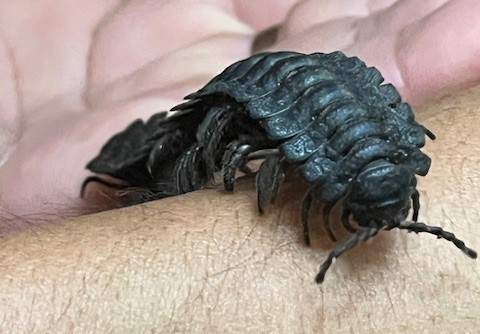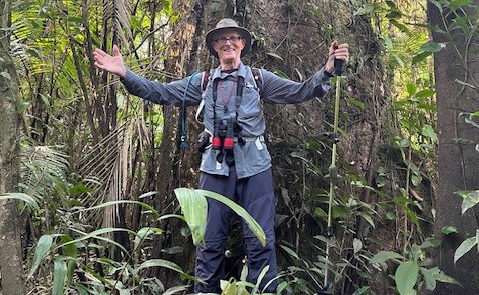
Story and Photos by Richard Simon
It had been 57 years since I had first muddied my boots in the muck and tangles of the Amazon jungle, north of the river-locked city of Iquitos, Peru.
Time to revisit.
The heat and humidity still press down. The ebbs and floods of the Amazon and Napo Rivers remain both predicable and extraordinary. The varied cries, hoots and shrills of the mostly unseen birds continuously break the air, while the symphony of buzzes and chirps from countless insects — mostly invisible unless you look carefully amongst the bush tangles, leaf litter, or crawling up your pant leg — blend their own rhythms nonstop.
And the most reminiscent sounds of all: the loud slaps of open hands smacking foreheads in the hopes of flattening into insect pancakes those inexhaustible legions of blood sucking mosquitoes whose sole purpose in life is to make one miserable.
In that half century, much – and little – has changed. There are improved mosquito repellents, and an incredible evolution of the Iquitos-based Explorama Lodges, which over 57 years since my first visit have germinated into four unique locations along nearly 100 miles of the Amazon and Napo Rivers or their tributaries.
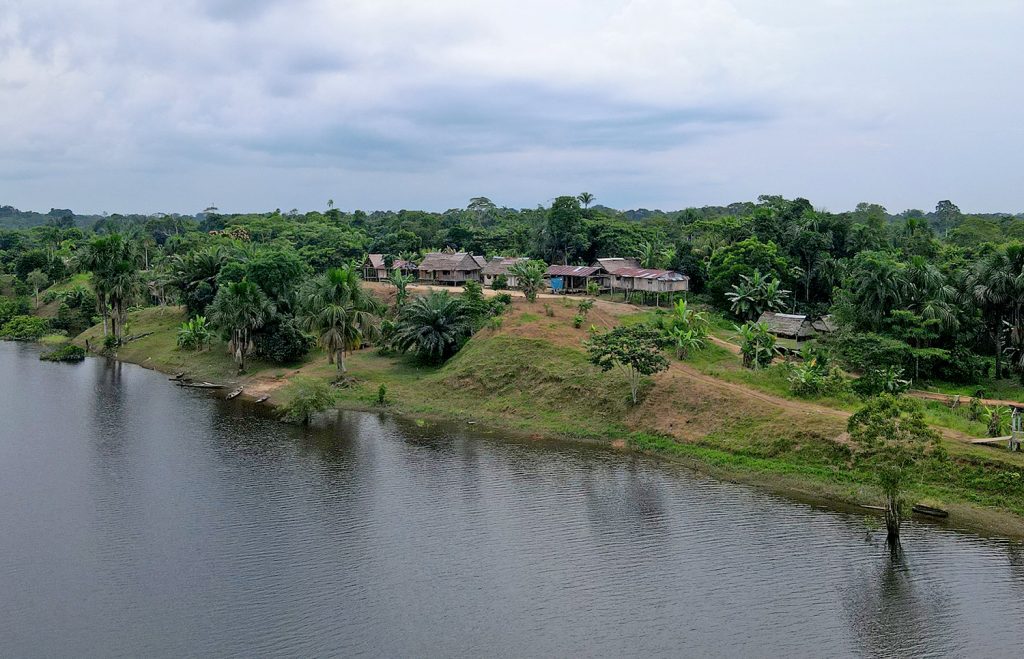
Explorama was founded in the mid-1960s by Peter Jenson, a Hamline University graduate Archeologist/Geologist, who had completed a two-year Peace Corps stint in the Peruvian highlands, teaching the country’s archeologists how to scientifically excavate sites.
Upon completion of that assignment, he decided to visit the river that had fascinated him as a child. There, Jenson immersed himself in the cultures of the river peoples, especially the Yagua tribe, where upon he started taking curious tourists by boat to meet the Yaguas in their communities.
With an entrepreneurial spirit based on education and environmental preservation, he founded his first eco-based wilderness lodge, best described by this early visitor as nothing more than a modest, wood-sided bunk house featuring rough, ceiling-less rooms open to the intricately palm-thatched roof above. It was a yawning invitation for anything that flew or crawled to join me outside my mosquito netting. And they did.
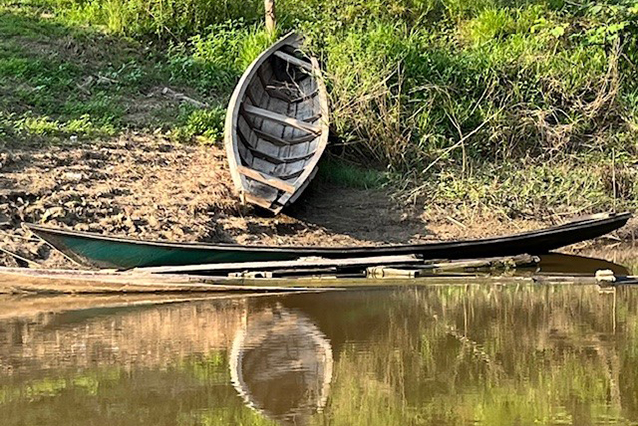
Today, Explorama Lodges comprises four facilities: the ultra-modern Ceiba Tops Lodge, 24-miles upriver from Iquitos (a great place to unwind and “cool” down from the sweat- saturating experiences at Explorama’s other jungle locales); Explorama Lodge (the original lodge, built in 1964 but recently and comfortably updated); ExplorNapo, a fundamental yet comfortable facility adjacent to the pristine Sucusari Forest Reserve, where the forest is as it was for eons and how it should remain far into the future (when nature calls, prepare to walk — or dash — some distance to the hole-in-the-board toilets); and the Amazon Conservatory of Tropical Studies, a research way-station in the rainforest open to those who wish to share in visiting scientists’ natural life discoveries.
Explorama Rediscovery
Tentative as she was about creepy, crawly, chomping, snapping and lunging deadly things, whose constant threats were minimized by primitive head-hunters lurking around every bend in a trail, my wife, Katherine, agreed to join me on my Explorama re-discovery.
Much to her relief, we didn’t see one snake on the jungle floor, although one village Shaman did find, snag and show us a poisonous Fer de Lance he briefly kept in a box for release behind the ExplorNapo Lodge. It then slithered to freedom under the moist leaves, to join the other poisonous serpents in the area: the bushmaster, parrot snake, and coral snake. Fortunately, they remained obscure.
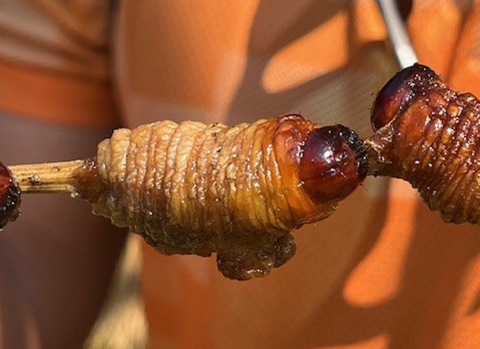
Additionally, we were introduced to a 20-foot-long constricting anaconda, brought home by two brothers who captured it after the reptile snared their dog while out hunting, unfortunately fatally squeezing it. However, the hunters would soon return the snake to the swamps where it was found, understanding (albeit sadly) that fido’s demise was simply part of the Amazon’s circle of life.
As for head-shrinking, that practice is probably 150-years in Peru’s (and Ecuador’s) primitive past, and more Hollywood production than recent reality.
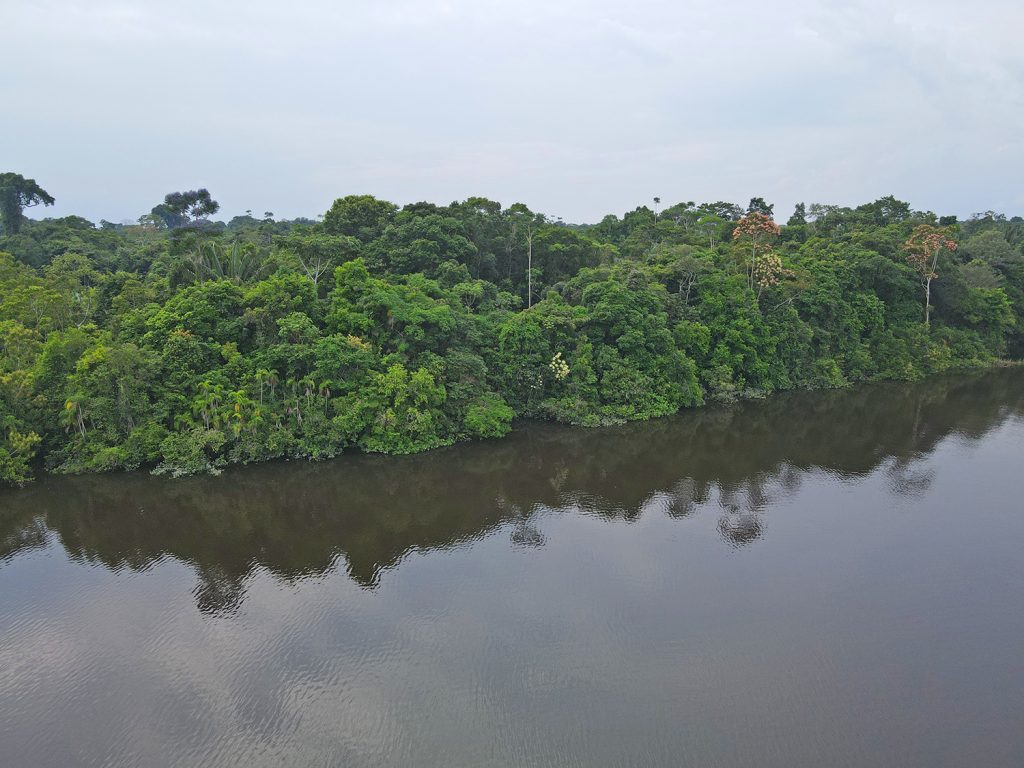
For the tribespeople, the Amazon is veined with rivers and streams that form the most convenient transportation corridors. Its shifting waters are chock full of jammed logs thrusting skyward like spears, tangled branches and floating vines and grasses, every one of them capable of holing a speeding boat — of which there are many hauling both people or goods — or slamming on the brakes to an outboard engine’s propeller.
Probably the most carefree watercraft are the efficient, hand-wrought canoes, whose freeboard is but a couple of inches above the waters’ surfaces, causing paddlers to constantly bail out the bottoms. But they are whisperingly navigated across the shallowest of streams or ponds as their owners fish or hunt along steep or overgrown banks. A skipper’s keen eyes seldom leave the water in front of them.
Explorama Lodge: Rustic, Modern, Basic
Explorama Lodge is the perfect introduction to the Amazon, a rustic cross between modern and basic. Ceiling-less rooms under the high thatched roof of a longhouse, but with ensuite shower and toilet, make for comfortable lodgings. Bring flashlights or headlights, for camp electricity is turned off at 11 p.m.
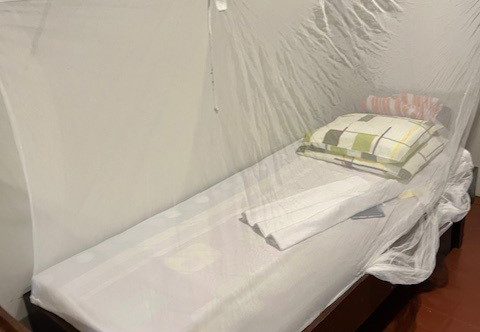
Still, ambient light allows for some visibility, enough to see the occasional bat flittering about — somewhat unnerving while answering nature’s call in the darkened bathroom. Though one craves illumination, turning on the headlight could well be an invitation for a party on your skin, so one instinctively rushes the job, then beelines for the security of the comfy foam mattress under the fine mosquito netting. All the while, jungle sounds remind you of the life thriving outside, and may actually help lull you to sleep. Or not.
It’s always fun to see what critter greets you on the netting when you awake for a 7 a.m. breakfast in the mess hall.
And breakfast is worth getting up for. Though basic, it is plentiful and wholesome, most always consisting of eggs of your choice in many varieties, potatoes, wheat and white toast, cereals, mandarin oranges, melons, bananas, the freshest of juices, and an explorer’s favorite beverages: coffee, tea or hot chocolate.
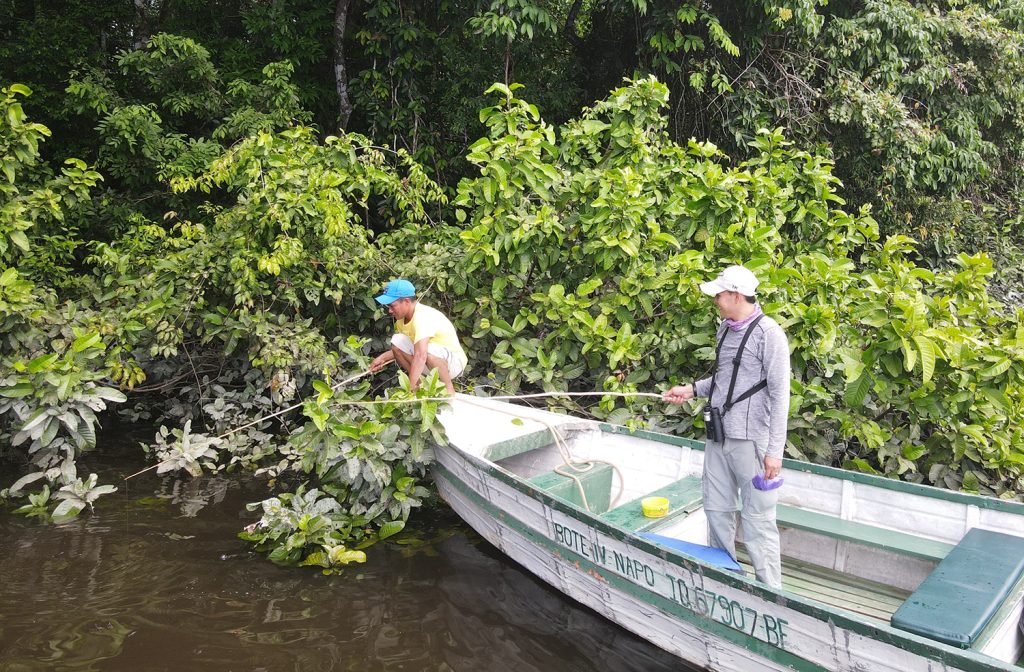
Though the mornings can be comfortably cool, not soon after sunrise one is perspiring up an appetite for lunch and dinner.
A typical luncheon might include carrot/tomato/onion and olive salad, followed by meat selections and vegetables of many kinds including a memorable lime-saturated broccoli. Various sauces also accompany every service. Desserts always included more fruits such as watermelon, papaya, pineapple and local fruits.
Seven o’clock dinners spanned the selections of meats and fish (including a piraña if you caught one), varied veggies, and rice of several varieties (one being green). Only if you chose to would you go hungry. I venture to guess that if everyone in Newport Beach followed the Explorama diet, there’d be fewer cardiologists in town.
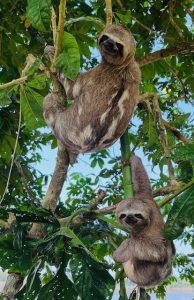
The Amazon Basin
The vast Amazon Basin is peopled by more than 400 tribes that have survived many hundreds of years in isolation, according to Wikipedia. A guesstimated 4,000 to 6,000 Yagua live in 30 communities covering 70,000 square miles, mostly along the Amazon. Their primary livelihood is hunting, fishing and farming; and now for some, tourism.
Of course, with commerce along the waterways, modernism has flowed into many of their communities over the past 100 years. It is not unusual to see water purification towers spiking skyward like Catholic Church steeples bringing a new level of health to the villages. These purification systems have been donated by the nonprofit CONAPAC (Conservation de la Naturaleza Amazonica del Peru, A.C.).
“CONAPAC was started by the owners of Explorama 34 years ago in order to work more closely with neighboring communities,” explained Pam Bucur, Explorama’s CEO, “and now works with 50 partner communities along the Amazon and Napo Rivers.” Another tribe, the Maijuna, people the Napo River region — the area of the ExplorNapo Lodge.
Though modernization is evident, the Yagua are not about to sacrifice their history and culture. Dressed traditionally, they regularly bring their dance and crafts to Explorama’s visitors. Interestingly (at least to me), my wife bought a woven bag similar in style and knots to some head-draping bags that were given to me by former headhunters with whom I hiked in the mountains of Irian Jaya (New Guinea) some years back.
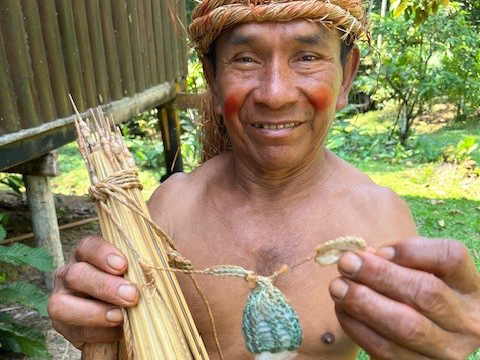
One of the traditional survival “crafts” associated with the Yagua is the hunting blowgun, one of which I was able to obtain for my collection of primitive hunting weapons. The craftsman negotiated a very fair price, for it took him more than one month to make — not including the kapok-tailed darts sans Curare stored in an intricately woven quiver. By the way, while hiking one afternoon with our bi-lingual Yamamomo guide, Nacho, he spotted a collection of tiny poison-arrow frogs. He picked one up for a closer inspection, careful not to touch its colorful back from where the poison secretes. I was satisfied just to look.
Piece of advice: if you ever buy a blowgun, make sure it’s shorter than a pair of skis. United Airlines charged me $232 because the ticket agent said the blowpipe was 12 inches too long. That’s absolutely the last time I pack a blowgun to fly anywhere.
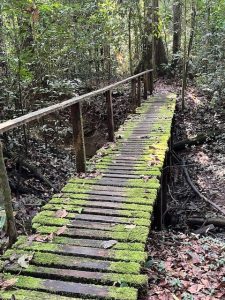
ExplorNapo Lodge
On our fourth day in the forest, we boarded a fast boat for a two-and-one-half hour dash to the ExplorNapo Lodge, off the Napo River and up into the forest-fringed Sucusari River.
Once settled into our open-air quarters there (reminiscent of a very basic summer camp for kids) Nacho guided us on an afternoon hike along a well-marked trail. That man’s eyes are so keen, he could count the eyelashes on a newt from 50-yards away at midnight.
While Katherine and I were scanning ahead and downward to avoid the tangled latticework of boot-snagging roots sabotaging the trail, Nacho was spotting enough birds, reptiles, simians and insects to pack a Peruvian zoo.
Not counting the gray and pink dolphins cavorting in the rivers en route to ExplorNapo, he pointed out such creatures as a whip snake, various poison-arrow frog species, countless butterflies (the most beautiful being the iridescent blue morpho), scarlet macaws flying high, blue-and-yellow macaws fleetingly skimming the trees, three-toed sloths just hanging around, howler and squirrel monkeys, black-mantled tamarins, lizards aplenty of many varieties, iguanas, and more—all reason enough to suffer the heat and humidity.
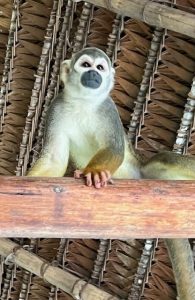
An American scientist studying the renewal of “wild meat” since the Maijuna tribe kicked out all timber exploiters from their lands 15-years ago shared some footage from “trail” cameras that the locals had placed for him throughout wide areas of the forests. The “film” starred such critters as peccaries, agouti, paca, deer, tapir, anteaters and that most elusive mega-star, the jaguar.
In those years of jungle rejuvenation, his studies reveal that the animal population has rebounded to normal numbers in all classes, meaning the locals were no longer starving on a forced diet of “songbirds and frogs.” This camera footage has served as the foundation for a game management program for their reserve, and it influenced the regional government to recognize an Area of Regional Conservation — a joint reserve between four Maijuna communities and the adjacent Kichwa tribal community upriver — all of which now encompasses nearly one million acres of ancestral lands, mostly primary rain forest.
Though contributing to the region’s (and the Amazon Basin’s) health in many ways, this conservation success unfortunately remains almost invisible to the world at large.
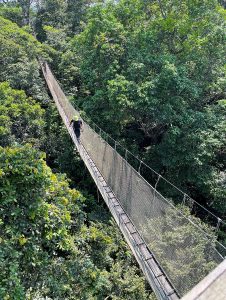
It’s one thing to stalk along jungle trails; it’s an entirely different experience to inch your way almost 100-feet above the jungle floor along a one-foot-wide suspension bridge spanning 14 different towers and many trees.
Only then can you appreciate the expanse of the jungle from the vantage point of monkeys, birds and tree-slithering snakes, or whatever else seeks either protection or dinner high up with a view to die for.
Explorama finishes off the week at their upscale Ceiba Tops Lodge, complete with pool sans piranhas, a comfortable preparation for the flight home to Newport Beach.
Because of the way in which Explorama takes care of guests throughout the visit, I can guarantee I’ll not wait another 57 years to return.
For information, contact Explorama Lodges at https://www.explorama.com.
